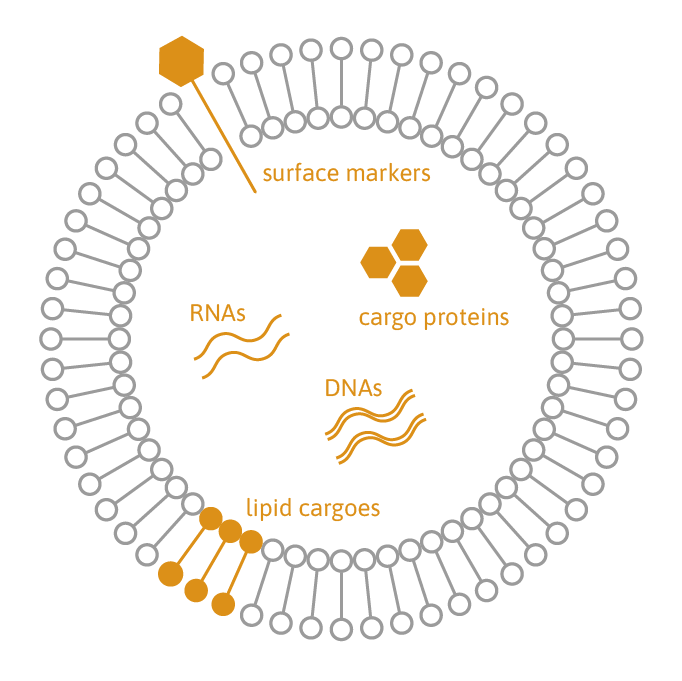unlocking the secrets of extracellular vesicle RNA cargo
Extracellular vesicles (EVs) are small, membrane-bound particles released by virtually all cell types into the extracellular space. Once considered mere cellular debris, EVs are now recognized as potent mediators of intercellular communication. They transport a complex cargo of proteins, lipids, and nucleic acids—including RNAs—to influence the behavior of recipient cells in both health and disease.
At TAmiRNA, we specialize in the isolation, characterization, and analysis of RNA cargo from EVs, with a particular focus on microRNAs (miRNAs), small non-coding RNAs, and mRNAs. Our goal is to support biomarker discovery, mechanistic research, and therapeutic development by providing high-quality EV RNA profiling services.
Why Analyze EV RNA?
EV-associated RNAs are protected from degradation by the vesicular membrane, making them stable and detectable in biofluids such as plasma, serum, urine, and cerebrospinal fluid. The RNA content of EVs often mirrors the physiological or pathological state of the originating cell, which makes EV RNA analysis an attractive tool for:
- Biomarker discovery in cancer, cardiovascular disease, neurodegenerative disease, liver disease, acute organ injury, and aging-related disorders
- Monitoring treatment response or disease progression
- Unraveling mechanisms of cell-to-cell communication
- Characterizing therapeutic EVs or EV-based drug delivery systems
Our Workflow for EV RNA Analysis
We offer a streamlined and standardized pipeline for EV RNA analysis that includes:
1. EV Isolation and QC
Using size-exclusion chromatography (SEC), ultrafiltration, or immunoaffinity-based methods depending on the application, we isolate EVs from diverse biofluids and cell culture supernatants. We apply established QC measures (e.g., NTA, TEM, Western blotting) to confirm EV identity and purity.
2. RNA Extraction from EVs
We use optimized protocols to extract high-quality RNA, including small RNAs, from EVs. Our methods are compatible with low input volumes and yield sufficient material for downstream analysis.
3. RNA Sequencing or RT-qPCR
Depending on your needs, we offer:
-
- Unbiased profiling of the EV microRNA cargo by small RNA-Seq
- Complete profiling of the EV mRNA and long non-coding RNA profile by whole transcriptome sequencing.
- Targeted quantification of specific miRNAs or mRNAs using RT-qPCR panels or custom assay
4. Bioinformatic and Statistical Analysis
Our in-house bioinformatics team performs data QC, mapping, normalization, and differential expression analysis. We also offer pathway enrichment and miRNA target prediction to help you interpret biological relevance.
Applications and Success Stories
In our own research and in collaboration with academic and industry partners, we’ve used EV RNA analysis to:
- Identify EV-associated miRNA biomarkers in lipedema patients (Priglinger et al. 2020)
- Characterize plasma-derived EV miRNA cargo for diagnosis of colorectal cancer (Lenart et al. 2024)
- Profile neuron-derived extracellular vesicle microRNAs in children with adverse neurological events (Lucaf et al. 2024)
- Explore the role of EV miRNAs in blood and lymphatic endothelial cell secretomes (Pultar et al. 2024)
Let’s Work Together
Whether you’re in early discovery or late-stage development, TAmiRNA can support your EV RNA biomarker projects with robust, reproducible, and publication-ready data. Contact us to learn more about our EV RNA profiling services and how we can help advance your research.








